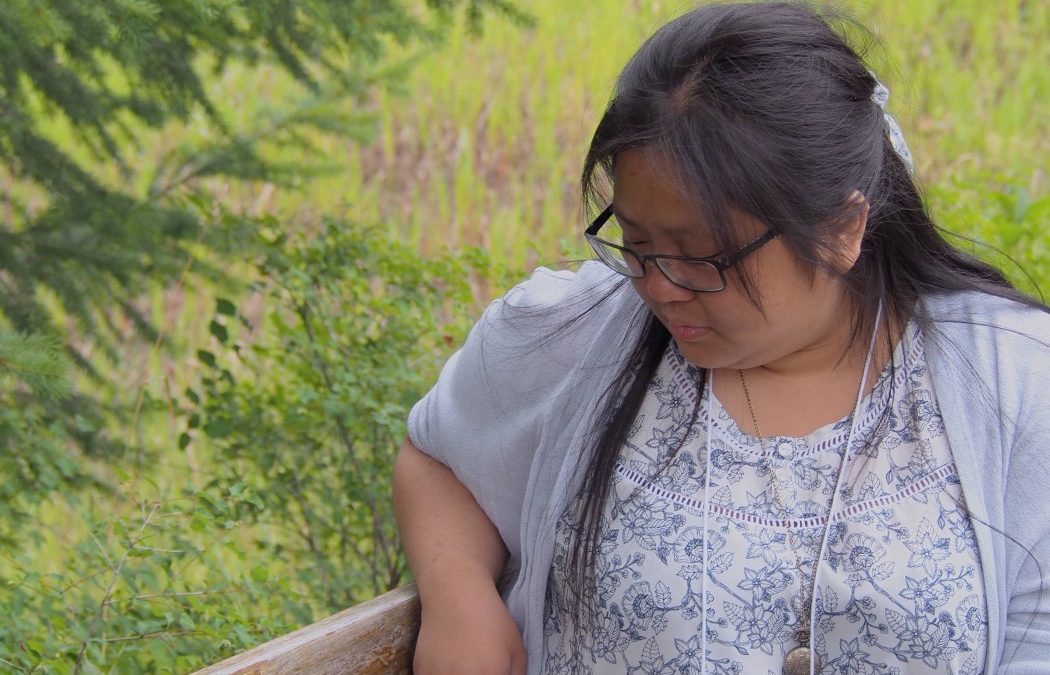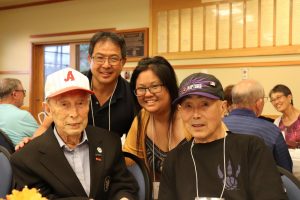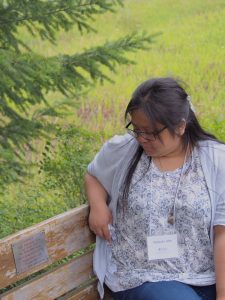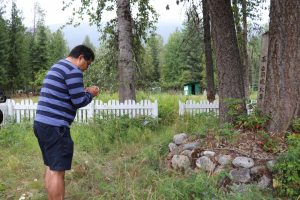Natsuki Abe Journey into the Interior Nov. 2019
Journey into the Interior
Natsuki Abe
In July 2019, I attended the University of Victoria’s first iteration of Canada’s Internment Era: A Field School. I am appreciative of a grant from the Victoria Nikkei Cultural Society to help with my tuition and fees. I also understand that grants from the NAJC, Frank Hori Foundation and Uvic Community Engaged Learning helped subsidize teachers and students. I was one of ten UVic undergraduate and graduate students along with ten in-service teachers from across Canada. The two-week course started with the five day-long bus tour held annually by the Nikkei National Museum in Burnaby.
The bus travelled throughout the various internment sites in the BC Interior, including stops at the newly installed highway signs. The bus tour allowed for the extraordinary opportunity for the field school students to interact with the other bus tour attendees and hear first-hand stories from those who had directly experienced the internment. We also did activities in Powell Street and the Vancouver Japanese Language School & Japanese Hall before and in Steveston after the tour.
The bus tour was a touching way for me to reconnect with my own family’s wartime experiences in Lemon Creek and New Denver. I had visited those sites before including seven years ago with both my grandparents present. They have both passed since and this was an emotional journey for me to visit not only the sites we walked together, but also to see the bench my father and his siblings commissioned in our ancestors’ honour. We also discovered the resting place of my great-great grandfather, Takejiro Toyota, in Slocan Cemetery.
After returning from the bus tour was a week of in-class seminars and discussions. We spent each morning with a particular focus, for example, we learned about the Redress movement from Art Miki and we walked through the teaching strategies used by the Landscapes of Injustice elementary school module. In the afternoon, we had time to work on our group projects which were designed to facilitate student and teacher collaboration. Our group created a text-based, choice-driven video game made with a program called Twine that is geared towards students in grades roughly 6-8 called Into the Interior.
By the end of the course, I had been incredibly immersed in my history and felt invigorated by the experience. Learning amongst my peers who came into this course with diverse backgrounds and connections to this history was one of the most valuable outcomes and I am very grateful to have had this opportunity.
Natsuki Abe is a third year history student at the University of Victoria and a Community Research Assistant with the Landscapes of Injustice project. She is a Yonsei (fourth generation Japanese Canadian) with a mother who is Shin Issei.




